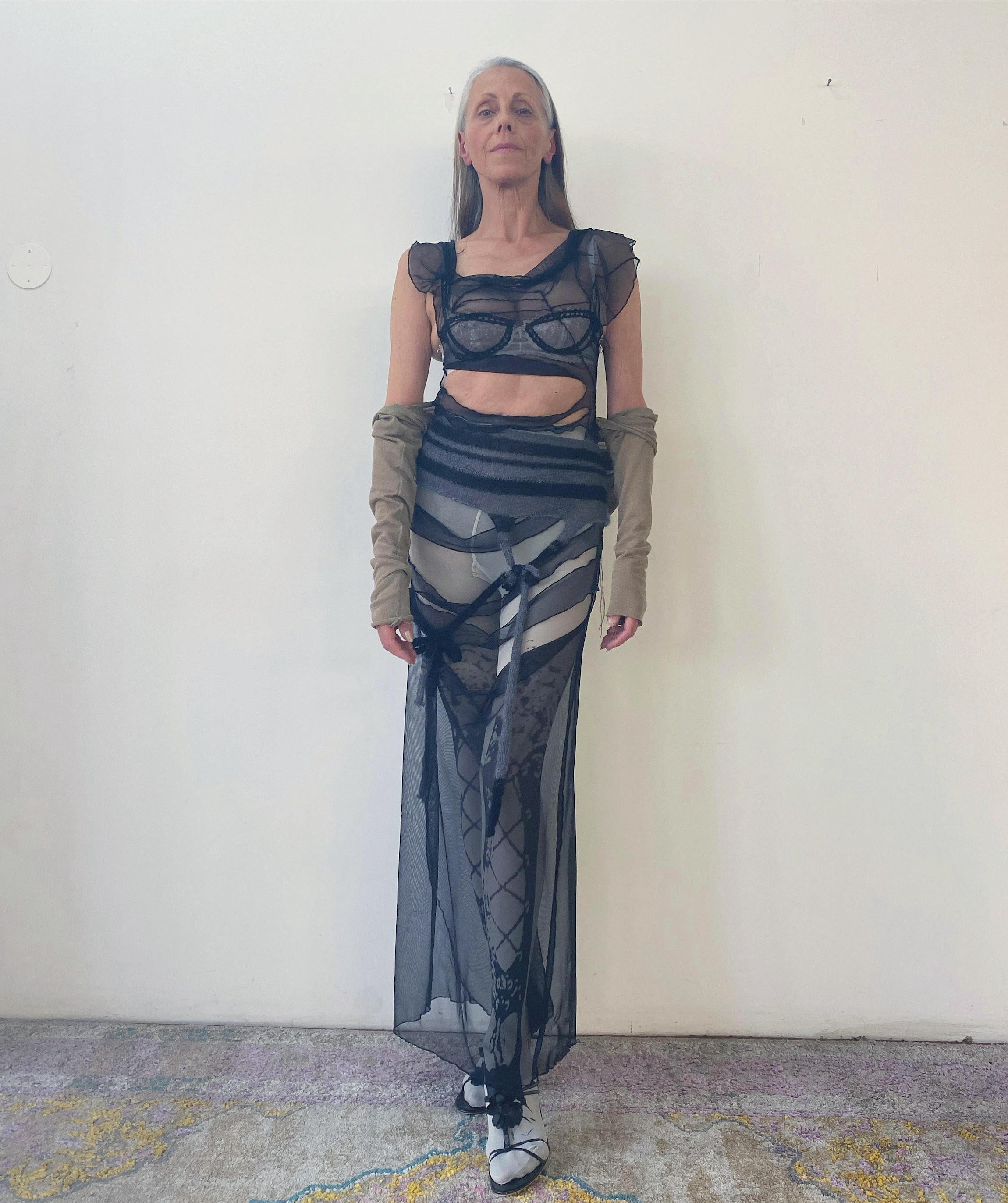Calissa Teiniker presents a new collection inspired by Ilona Staller
One for the Archive is inspired by the iconic Ilona Staller. The collection, which debuted in Berlin on 8 June at 6:30pm and was styled by Franca Chase, includes one-of-one slow fashion pieces that accentuate curves, folds and scars on the body—existing in dialogue and forming intimacy with the wearer.
Calissa Teiniker is a Berlin-based fashion designer, originally from Aotearoa New Zealand.
There are nods to the 1920s in the way that the collection has been styled. Can you speak more about this?
It started off by wanting to make flower crowns in the style of those that Ilona Staller would wear, and then a lot of the makeup references were also quite 1920s. The era was about pushing the boundaries of what was socially acceptable.
Tell us about Ilona Staller, the inspiration for this collection?
Her provocative energy and not-give-a-fuck attitude relates a lot to my own journey with personal growth and sexuality. Growing up in Aotearoa, I wore club kid boots and harnesses with embroidered tights and mesh tops. I always felt self conscious of the way men looked at me, cat-called me from a very young age and even how older women sent disapproving looks my way. Moving to Berlin really boosted my confidence in terms of self-representation and having a non-apologetic outlook on the way I dressed. I started to see this as a problem with society for sexualising young feminine bodies, and realising that this was not my burden to carry. Ilona Staller is not talked about or remembered enough for her early influence, not only as a well known sex worker, but also as a member of Parliament in Italy, a very conservative and religious country.
Why is she the fashion and political icon for our times?
In 1988 Ilona Staller attended the Cannes festival almost completely naked. She wore a white gown that draped over her crotch and harnessed around the skin of her chest and thighs. She is infamous for wearing flower crowns and carrying around teddy bears and gifts she received from dedicated fans. Ilona Staller is for the decriminalisation of drugs, against censorship of any kind, in favour of sex education in schools, and for objective information about AIDS. She also sued her ex husband Jeff Koons for not paying enough child support. What more can I say? She is a sex icon and her public presence is forever inspiring.
How did you translate this into fabric, construction and silhouettes for the collection?
The collection plays with cheeky silhouettes, showing parts of the body which we are taught to hide away or be ashamed of. The point is for the wearer to feel encouraged and confident by showing skin, having complete control over their own body and the way they show it to the public. My process involved a lot of research around Ilona Staller and looking at famous images of her wearing showy outfits in public. I wanted to combine feminine power suit energy with playful silhouettes, draping blazers that fitted open around the chest to leave the skin bare and skirts that only just covered the buttocks. I also used knitwear techniques to make garments that adorn the bare skin underneath them while providing a feeling of comfort to the wearer.
How would you describe her style in three phrases?
Emphatic, chic, deconstructed feminine
Artist Louise Gray has said, “the best way to protest is to create.” What was it like to put this show on yourself?
To be honest, putting on this show was very scary for me. Not because of the outfits or what they represent, but because it was really putting myself out there, testing my limits and what I was capable of. Yes, I like to protest through my own creativity and art, but it's about more than that. It's so difficult to be a one-woman run independent designer in the fashion industry, which is to this day dominated by men. The constant struggle to feel good enough is overwhelming and in the end women are still never as well noticed and celebrated. It was very important for me to do this, to prove to myself that I am capable of this work.














The Art Paper attends the opening of Aotearoa Contemporary at Auckland Art Gallery Toi o Tāmaki with photographer Felix Jack, capturing the hottest looks on the night.